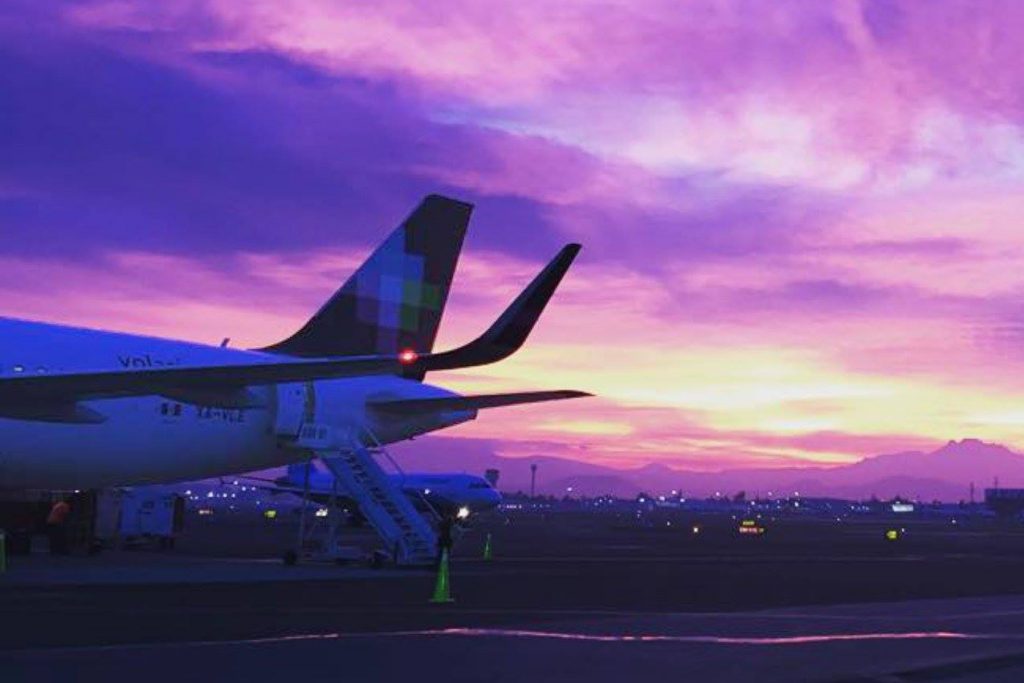Volaris Is Counting on Converting Mexico's Bus Passengers as 2021 Growth Driver

Photo Credit: Volaris is one of the few airlines in the world to say it's in a better position now than before the pandemic. Volaris / Volaris
Volaris is emerging from the pandemic as the largest airline in Mexico, consolidating its position as Aeromexico retrenches in bankruptcy and Interjet's woes left it unable to pay its fuel bills. Volaris expects to exceed its 2019 capacity in the second quarter, stoked, in part, by going after Mexico's large bus market.
Although this isn't a new strategy for Volaris, the ultra-low-cost carrier (ULCC) plans to step up its efforts to convert bus passengers to air travel, the company said in an investor update this week. The market is huge. Mexico's bus lines transport about 3 billion passengers annually. Of that 3 billion, Volaris estimates about 700 million are bus trips of six or more hours.
The argument Volaris will emphasize this year is that air travel is not just quicker but cheaper as well. The average bus fare from Mexico City to Tijuana is 2,243 pesos ($113), while the average Volaris fare on the route is $62, the company said. The trip takes 30 hours by bus and 4 hours by air.
The company sees potential to convert another half million bus passengers this year through marketing and education campaigns. Although demographic trends favor its argument, it hasn't always been easy for Volaris to make its case. There's a lingering sense in Latin America that air travel is the preserve of the wealthy, a notion aided by government policies of punitive taxes and fees.
The company is further encouraged by the growth of Mexico's middle class. Since 2010, the country's middle class has grown by 16 percent. Volaris estimates now more than half the country's population is middle income or above and sees opportunity in this market. But air travel lags, compared with the global mean of 0.6 air trips per capita. Mexico's average was 0.5 annual air trips per capita in 2019, compared with 1.1 for Chile, 1.3 in Turkey, and 2.8 in the U.S. "Mexico still is an under-penetrated market when compared with other economies," Volaris said in its update.
In the past, Volaris has taken its case directly to bus stations (and Chief Commercial Officer Holger Blankenstein said bus lines often have had to shoo Volaris employees out of stations). The company also is continuing efforts to make it easier to pay for air travel in a country where many residents don't have access to credit cards. Internet-enabled mobile phones are widespread in Mexico, and Volaris allows passengers to book travel on their phones and pay in cash at convenience and grocery stores.
Another huge opportunity Volaris sees this year is in the way the Mexican domestic airline market is shaking out. Interjet filed for bankruptcy protection earlier this month. The carrier essentially stopped flying in December after lessors repossessed most of its fleet and it couldn't pay the fuel bill for its six remaining aircraft. Aeromexico filed for bankruptcy protection in the U.S. last year and is in the process of downsizing.
As part of this retrenchment, the Mexican narrowbody fleet could be 26 percent smaller this year compared with last. Volaris sees "a massive opportunity to take [market] share." The airline had about 38 percent of the domestic market last year, while Aeromexico had 29 percent and Viva Aerobus had another 29 percent. Volaris is expected to take delivery of 11 new aircraft this year.
